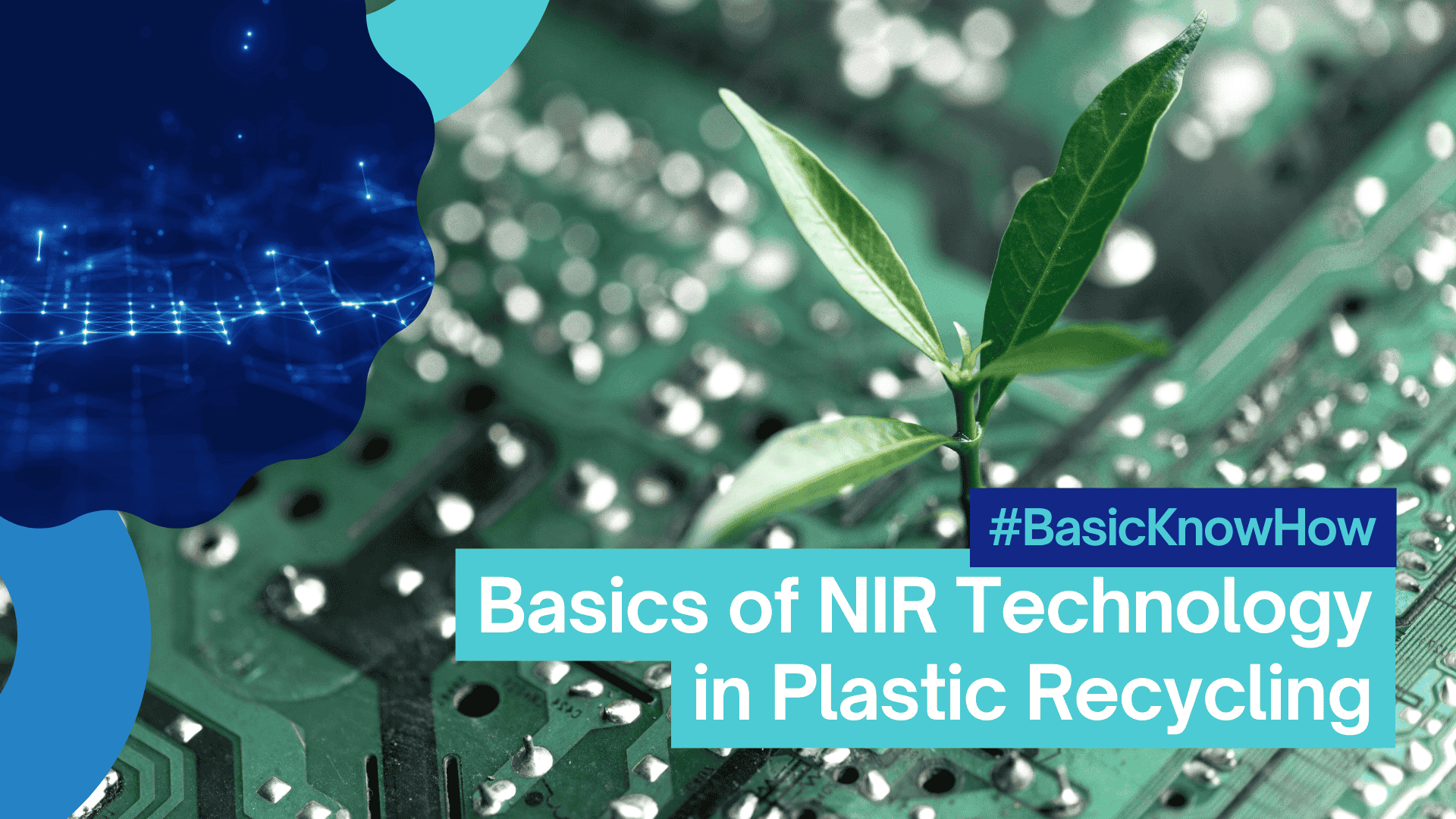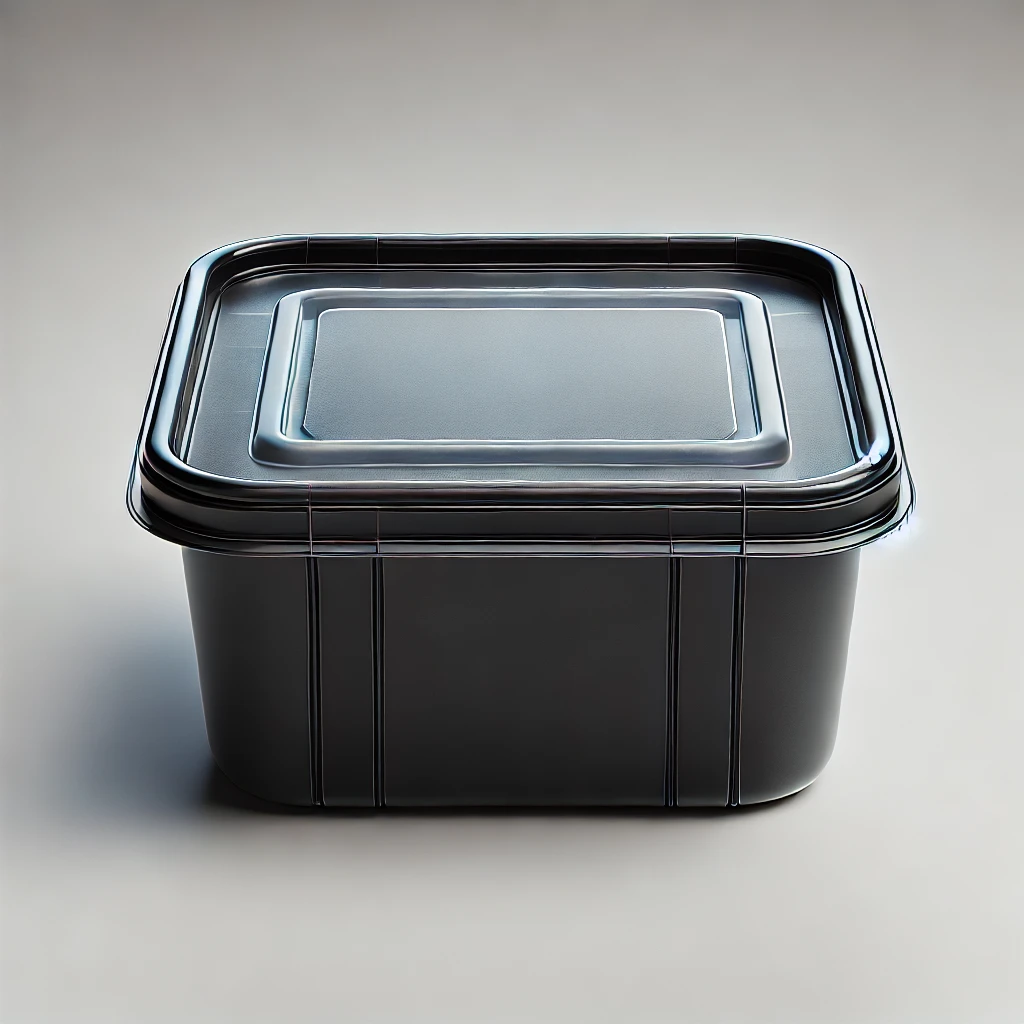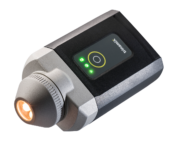Near-Infrared Spectroscopy (NIRS) has emerged as a transformative technology in plastic recycling, offering rapid, non-destructive methods for identifying and sorting various plastics. This essential technique plays a critical role in improving recycling efficiency and sustainability, aligning with global efforts to reduce plastic waste. By enabling accurate sorting, NIR technology helps industries minimize contamination and support circular economy initiatives.
This guide provides a foundational understanding of NIR technology, including its advantages, limitations, and emerging trends, highlighting its vital role in plastic recycling.
How Does NIR Technology Work?
NIR spectroscopy relies on the unique spectral signatures of materials. When NIR light interacts with plastics, specific wavelengths are absorbed, while others are reflected. These reflections are analyzed to determine the material’s composition, enabling precise and efficient sorting.
Key Steps in the NIR Process:
- Light Emission: A light source directs near-infrared light onto the plastic surface.
- Material Interaction: The plastic absorbs certain wavelengths and reflects others.
- Detection and Analysis: A detector captures the reflected light, and software identifies the material by comparing its spectral fingerprint to a database.
Advantages of NIR in Plastic Recycling
- High Speed and Efficiency: Industrial NIR systems can sort several tons of plastic per hour, making them indispensable for large-scale operations.
- Non-Destructive Testing: Materials are analyzed without altering their physical state, preserving recyclability.
- Adaptability: NIR can sort transparent, translucent, and various colored plastics, catering to a wide range of recycling needs.
- Low Maintenance: Modern NIR systems require minimal upkeep, reducing operational costs.
- Enhanced Precision: AI-driven improvements ensure accuracy even when sorting contaminated or mixed materials.
Limitations of NIR Technology
While highly effective, NIR technology has some limitations:
- Black Plastics: Traditional NIR systems struggle to identify black plastics due to their light-absorbing properties. Advanced systems, however, are overcoming this challenge through improved algorithms and additives detection. (See our article on black plastics).
- Multi-Layer Plastics: Laminates with overlapping spectral signatures remain difficult to sort.
- Contamination Sensitivity: Dirt, moisture, and labels can interfere with detection accuracy.
- Initial Costs: High upfront investments may deter smaller facilities despite long-term savings.
- Limited Material Scope: Some bio-based or heavily dyed plastics are harder to identify.
FAQs About NIR Technology
By reducing contamination, NIR enables cleaner recycling streams, cutting energy use and supporting circular economy goals.
Yes, NIR improves sorting accuracy, ensuring compliance with recycling regulations.
Beyond recycling, NIR is used in pharmaceuticals, agriculture, and food production for material verification.
Real-world accuracy exceeds 90%, with AI integration improving results further.
NIR is effective for PET, HDPE, LDPE, PP, and PS. Multi-layer and black plastics require enhanced systems.
Comparison: NIR vs. Other Sorting Technologies
| Feature | NIR | XRF | Raman Spectroscopy |
|---|---|---|---|
| Speed | High | Moderate | Low |
| Material Suitability | Plastics | Metals and alloys | Specific polymers |
| Black Plastic Detection | Limited (Improving) | Limited | Moderate |
| Cost | Moderate | High | High |
NIR spectroscopy offers rapid analysis, delivering results within 2-3 seconds using handheld spectrometers and up to 300 measurements per second with high-end hyperspectral imaging (HSI) cameras in the NIR wavelength. This speed makes NIR particularly suitable for applications requiring quick decisions, such as in manufacturing or quality control processes.
In contrast, Raman spectroscopy typically requires longer measurement times, often around 1 minute. However, Raman provides more precise molecular information and better selectivity due to its sharper, more defined signals.
A significant limitation of NIR spectroscopy is its inability to effectively analyze black plastics containing carbon black additives. Carbon black, commonly used for coloring plastics black, absorbs almost all NIR signal, preventing the spectrometer from capturing the necessary data to identify the plastic type. This limitation poses a considerable challenge for the recycling industry, particularly in sorting black plastics.
Optical PTFE: A Reference Standard for Calibration
Optical PTFE (polytetrafluoroethylene) is a highly reflective material widely used as a reference standard in spectroscopy, including NIR applications. It is integral to achieving precise measurements and reliable calibration of NIR systems.
What is Optical PTFE and What is it Used For?
Optical PTFE is a sintered, chemically inert material with exceptional reflectivity—up to 99% across the NIR spectrum. This makes it ideal for use in:
- Calibration: Ensuring NIR devices produce accurate spectral readings by providing a consistent reference point.
- Background Material: Acting as a reflective surface during material analysis to enhance measurement precision, particularly for thin and transparent plastics.
Why is Calibration with Optical PTFE Necessary?
- Accuracy: Calibration using a stable, high-reflectance material like optical PTFE ensures that the system correctly interprets spectral data.
- Consistency: It minimizes variability between measurements, critical for maintaining reliable sorting in industrial processes.
- Sensitivity: Proper calibration enhances the system’s ability to detect subtle differences in material composition, even for challenging cases like multi-layer plastics or materials with slight contamination.
The Role of Optical PTFE as a Reflective Background
When analyzing thin or transparent plastics such as films or PMMA, a reflective background is crucial to:
- Maximize Light Return: These materials allow some light to pass through, which can reduce signal strength. Optical PTFE ensures that any transmitted light is reflected back for detection.
- Enhance Signal Quality: The high reflectivity of optical PTFE improves the clarity of spectral signatures, ensuring accurate material identification.
- Reduce Measurement Errors: Without a reflective background, measurements may be inconsistent or unreliable, especially for materials with low opacity.
By incorporating optical PTFE into NIR systems, industries can achieve unparalleled precision in sorting and analyzing plastics, even under challenging conditions.
Emerging Trends in NIR Technology
- AI Integration: Machine learning enhances accuracy, particularly for complex materials. According to research from Spectroscopy Online, integrating AI with NIR systems improves material differentiation and enables more efficient processing of layered or mixed compositions.
- Portable NIR Systems: Compact devices are broadening access for smaller operations and on-site testing. The Avenir Siena spectrometer, which we offer, is equipped with an InGaAs sensor capable of measuring up to 2100 nm without the need for cooling. This advanced design minimizes dark signals and ensures precise measurements while maintaining fair pricing. Additionally, it features a chain-turn mechanism, enhancing its adaptability in various applications. The DLP technology utilized in Inno Spectra’s spectrometers leverages Texas Instruments’ Digital Light Processing modules. This technology enables customizable wavelength selection, enhanced signal capture through larger detectors, and the use of cost-effective optical components, all within a compact and portable design. Learn more about these innovations on our Avenir Spectrometer and Inno Spectra Spectrometer pages.
- Circular Economy Contributions: NIR technology is pivotal in advancing closed-loop recycling systems, ensuring sustainable reuse of resources. For instance, our NIR reflectivity solution helps packaging designers assess the detectability and sortability of their consumer goods packaging during the material design phase. This ensures that packaging materials are optimized for efficient recycling processes. Learn more about this solution on our NIR Reflectivity Solution page.
Key Resources
- Internal Links:
- External Links:
Order online
Buy directly from our online store. Check for more offers!
About us – Solid Scanner
Let’s take responsibility and recycle more plastics, textiles, carpets, mattresses and more – ask us for suitable solutions. Our portfolio includes solutions ranging from small, portable solutions to individual solutions based on hyperspectral camera systems for simple, automated identification of plastics and in the sorting process and for inline process control, e.g. for homogeneity.
About trinamiX – the sensor technology company
Our technology partner trinamiX GmbH, based in Ludwigshafen, was founded in 2015 as a wholly owned subsidiary of BASF SE. As a start-up within the company, it is not only operationally independent, but also has unique access to the expertise and experience of the entire BASF Group. Its patent-pending technologies enable people and machines to capture the hidden and invisible world around them to make better decisions and increase safety.



